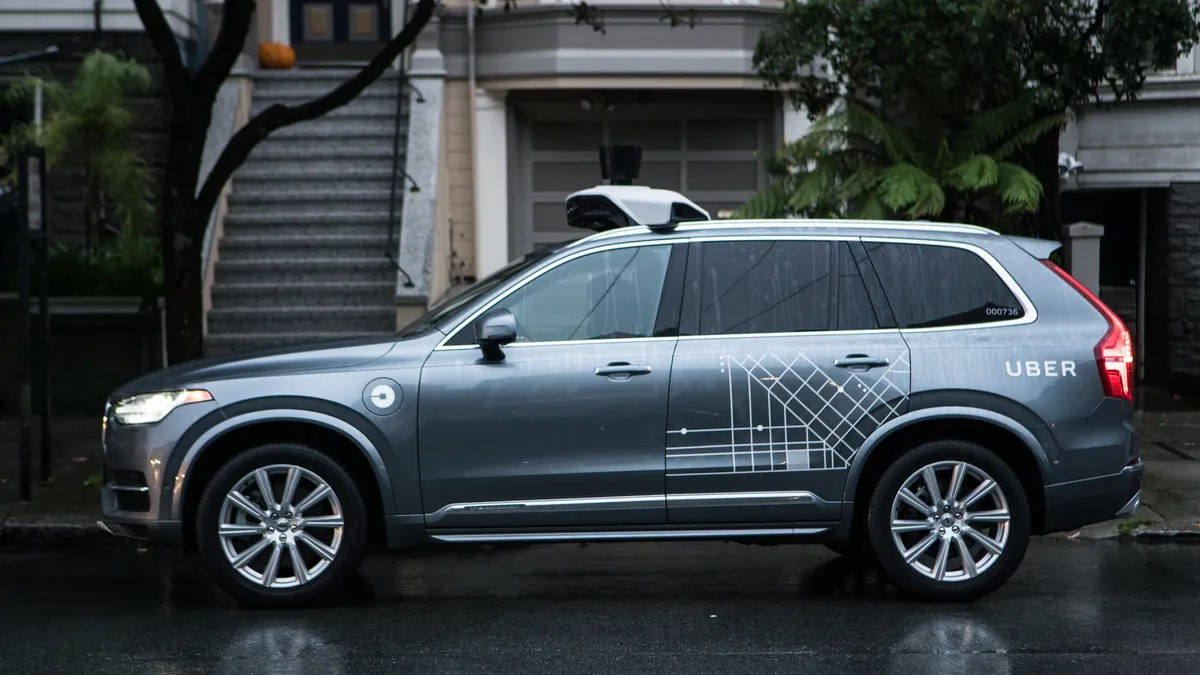Dive Brief:
- Uber has laid off all of its autonomous vehicle (AV) test drivers and eliminated the position, according to Ars Technica and others. The news came during an Uber meeting in Pittsburgh where most of the 100 laid-off employees are based, CityLab reports, but some also are in San Francisco.
- The employees may take severance or apply for one of 55 new "mission specialist" jobs. Uber previously had employed separate teams for testing on private tracks and on public roads, but the new positions will do both.
- Uber still plans to resume testing in Pittsburgh at some point this summer.
Dive Insight:
The vehicle testers in San Francisco and Pittsburgh already had been on paid leave since March, following a fatal pedestrian collision in Arizona. The safety backup driver eventually was discovered to have been streaming video on a mobile device for a significant period of time just before the crash occurred. The incident immediately prompted Arizona's governor to suspend the company's testing indefinitely, and Uber completely shut down its Arizona AV pilot in May, laying off about 300 employees there. The incident prompted other companies and cities to suspend their own AV testing. Uber also didn't renew its permit to continue testing in California.
Some might view these layoffs and Uber's widespread scale-back as an indication that it intends to shut down its AV sector altogether. But it more likely indicates that the company has tried to slow down and get the testing right instead of making mistakes in its haste to be first to release an AV.
That sentiment seems supported in its creation of the new mission specialist positions. Those employees will receive extra training and work more collaboratively and directly with AV engineers. And testing will be performed on a smaller, more targeted scale. The company reportedly has consulted with outside experts to improve various procedures and boost safety.
Once Uber does resume AV tests, regaining public trust will be a challenge, especially from the cities and states where it wants to be permitted to test on public roads. Following through with actions that reflect its renewed commitment to safety and quality in the revamped testing program could be a step in the right direction.












